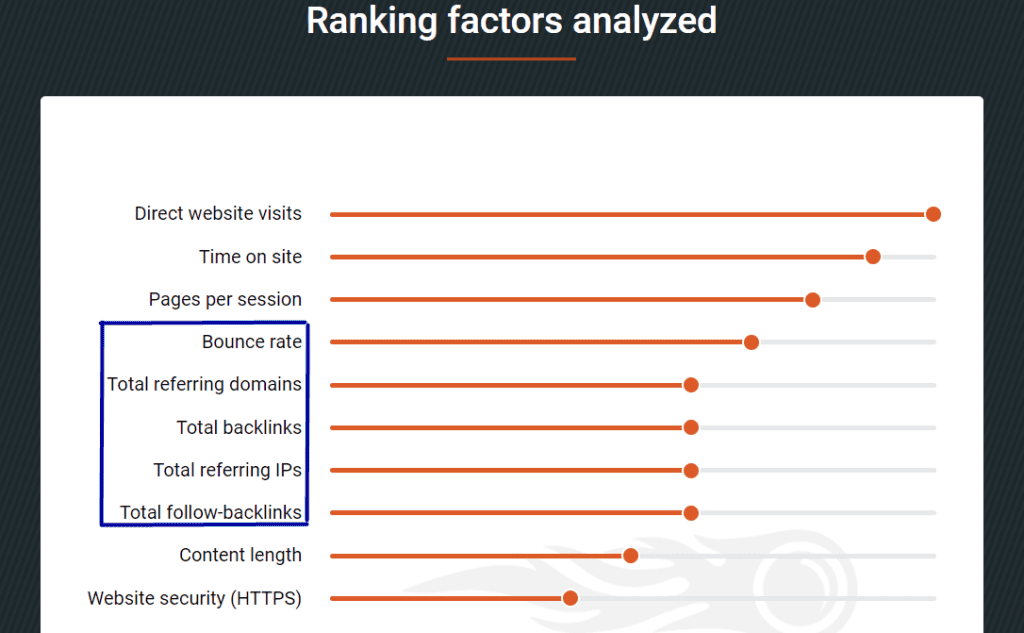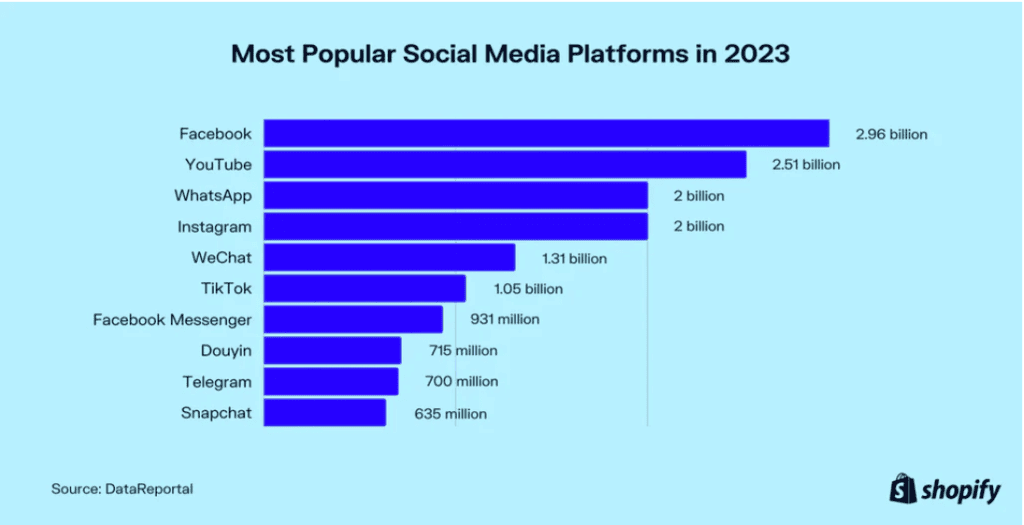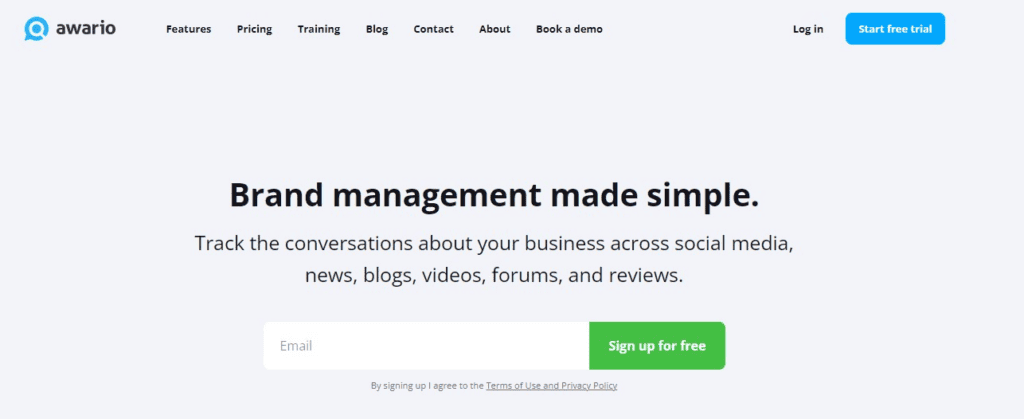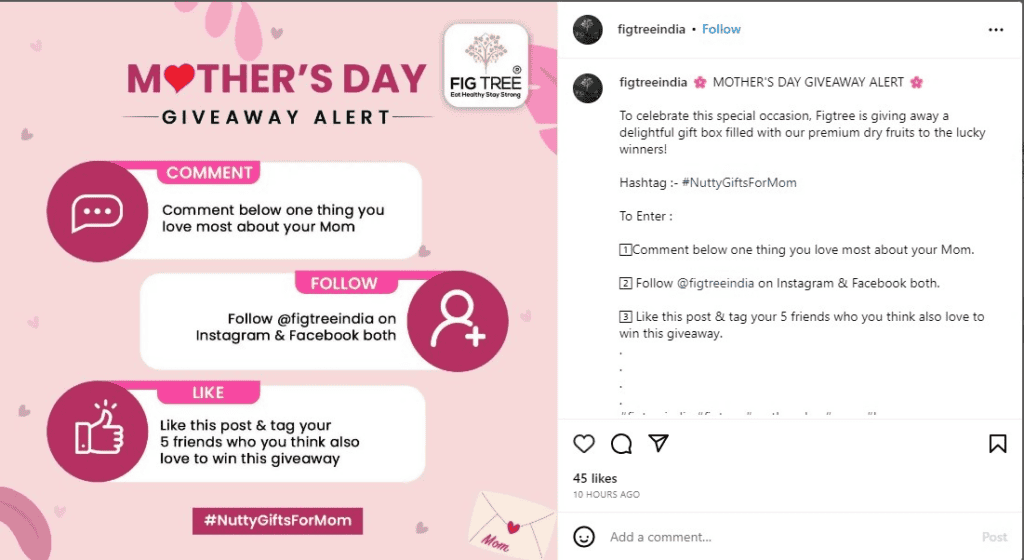SaaS delivers software applications over the Internet. Users can access them from any device connected to the global web. So, staying visible online is crucial for SaaS companies. It will make their solutions easy to discover. They will win over a solid market position and grow their business.
Do you have a promising SaaS product but your website doesn’t show up in related searches? That’s where SEO rolls in to fortify your online presence and give your software’s online visibility a boost.
SEO is like a roadmap that helps search engines, especially Google, better understand your website. It brings your website into your potential customers’ view.
Are you a startup launching a new SaaS product? Or are you an established company seeking to enhance its digital presence? Our guide will help you navigate SaaS SEO complexities. It will help you stand out in your niche.
SEO for SaaS: Why Does It Matter?
According to Statista, the SaaS market revenue in 2023 almost hit the $259 billion mark. And it’s expected to surpass $374 billion by 2028. This sector has a huge potential. To embrace opportunities in it, your product should stand out from the crowd and be visible.
SaaS companies operating primarily online should have a well-thought-out SEO strategy. This will help people who are looking for appropriate solutions find their software. What’s more, it’s not just about being visible. It’s about being spotted by the right people at the right time.
Let’s skip boring details and explanations. Here are a few persuasive reasons why SEO strategies and tactics are critical. SaaS needs it to succeed in the digital-first-era:
- Visibility and Reach: Effective SEO helps potential customers spot your SaaS product when they search for relevant keywords or solutions. Improved visibility, in turn, means more organic traffic to your website. Over 53% of overall organic traffic comes from organic search. And top results on Google produce click-through-rates of nearly 28%. It’s an impressive traffic share.
- Lead Generation: Higher visibility and increased traffic can result in more leads. SEO helps attract users seeking solutions your SaaS product offers. This can potentially boost conversions.
- Competitive Edge: Ranking well in search results positions your product ahead of competitors. It also establishes a reputation in the market.
- Cost-Effectiveness: While requiring time and effort, SEO is a cost-effective strategy in the long run. Generated organic traffic often brings higher-quality leads. It also results in more natural conversions compared to paid advertising.
- Credibility and Trust: Top rankings in search results foster trust among consumers. They signal credibility and expertise. This makes users consider your product a trustworthy solution.
SaaS SEO vs SEO for Other Business Types: What’s the Difference
In general, SEO is all about increasing a website’s visibility and search engine rankings. The core promotional principles remain similar across industries. Yet specific approaches for SaaS SEO tend to differ from those for other businesses. Let’s look into the nuances that define SEO tactics for SaaS companies.
Sales Cycle
Compared to traditional e-commerce or brick-and-mortar businesses, SaaS is more about attracting users to sign up for a service or a subscription rather than making a one-time purchase. The SEO strategy tends to focus more on long-term value. It aims to retain customers accordingly.
Target Audience
SaaS products aimed at the end user. However, SaaS companies typically target other companies as their customers and operate mainly in the B2B sector. According to Gartner, when buying, B2B clients prioritize digital channels for search and spend over 27% of their time researching on their own. Hence, SaaS solutions should stay searchable online and feel trustworthy to hit B2B customers.
Keyword Targeting
SaaS SEO often revolves around keywords related to solutions or problems that potential users might be searching for. This is because of the target audience and the product’s specific nature. For example, if your SaaS offers project management tools, your keywords of focus will be like “best project management software” or “how to streamline project tasks.” It’s about embracing keywords that align with the difficulties and issues your software helps handle.
Subscription-Based Model
SaaS products usually hinge on subscriptions.SaaS SEO efforts aim to acquire new users and provide ongoing value and support. This way, they can retain existing users and reduce churn rates. To achieve that, companies often involve content marketing strategies. They address pain points, offer solutions, and nurture leads through the sales funnel. By creating blog posts, whitepapers, or case studies, they demonstrate the software’s value or solve specific industry problems.
Trial-Promoted Conversions
Other businesses prioritize lead generation and direct conversions. In contrast, SaaS companies use free trial periods to engage users. They then convert these users to loyal paying customers. Thus, over 84% of new users tend to pay for cloud solutions after a free trial.
In a nutshell, SaaS SEO mostly centers around specialized software solutions and nurturing long-term customer relationships. Meanwhile, other businesses might focus on a broader array of products or services. They might cater to immediate customer needs within specific localities or industries.
A Glimpse at SaaS SEO Fundamentals
When it comes to online visibility, SaaS providers strive to put their software in front of the customers not only as they search for solutions. They aim to engage and retain customers. They seek to ensure findability at all stages of the buying journey. With that, SaaS SEO involves a complex approach. It’s like a toolbox with four main compartments:
- On-page SEO: On-page SEO involves optimizing the content and structure of your website. This makes search engines love it. That means using the right keywords in your content, having a user-friendly website design, and making sure your pages load fast and work smoothly.
- Off-page SEO: It is all about building relationships and getting other websites to link back to yours. When reputable sites link to your platform, search engines perceive your company as legit and boost your rankings.
- Technical SEO: It’s the backstage work that keeps everything running smoothly dealing with the nuts and bolts of your platform. It covers stuff like optimizing your site’s speed. It includes making it mobile-friendly and using special code. This helps web crawlers better understand your content.
- Content strategy: High-quality, relevant, and engaging content is the driving force behind your platform’s visibility online. It should educate your audience and align with what people are searching for. A solid content strategy is key to attracting visitors and keeping them interested. It entails blog posts, videos, infographics, or product descriptions.
6 SaaS SEO Tips to Make Your Software Visible Online
Each of the compartments in the SaaS SEO toolbox contains different instruments. They help marketers achieve desired results and get noticed by web crawlers and potential customers.
To save you from digging into the nitty-gritty of each compartment, we’ve made a list of effective tips to make your software searchable and findable on the web. To make those tips actionable and reliable, we were guided by updated Google ranking factors, the prime of which include:
- Quality content;
- Backlinks;
- Website’s technical aspects such as loading speed and mobile-friendliness;
- User experience;
- Keyword optimization;
- Social signals;
- Brand signals.
- Do Keyword Research and Analysis
It’s your starting point in the SaaS SEO. These are words and phrases your potential users are typing into search engines when they’re hunting for software like yours. Efficient keyword research is not just about guessing some obvious terms. It’s rather about seeking hidden gems that can bring the right traffic to your website.
This process involves a mix of using specialized tools, digging through analytics, and a sprinkle of intuition. Explore keywords related to your software, analyzing their
- search volume (how many times they’re searched for);
- competition level (how many others are targeting them), and
- their relevance to your SaaS offering.
You shouldn’t just stop at identifying keywords, though. You should also group and prioritize them strategically. Some keywords might have higher competition but immense search volume. Others might be more niche but easier to rank for. Finding the sweet spot between relevance, search volume, and competition is the golden ticket. This way, you’ll be able to properly allocate keyword groups across a marketing funnel.
Take a peek at high-ranking competitor keywords. Tools like SEMrush or Ahrefs can help you uncover their strategies. You’ll be able to spot opportunities, see what’s working for them, and even find some gaps you can fill to stand out.
Finally, you should remember that SEO is rather a marathon than a sprint. So, you shouldn’t expect to get immediate keyword benefits. Instead, analyze keyword traffic potential in the long run to stay relevant over time. Google Trends is a helpful tool for estimating keyword performance trends.
- Optimize Your Platform for Mobile Devices
How often do you whip out your phone to search for stuff? Every now and then, right? Well, you are not alone. With over 6.9 billion mobile users worldwide, nearly 59% of website traffic comes from mobile devices.
The chart below demonstrates how the share of website visits on mobile has been changing over the years.
More and more people are browsing, searching, and using apps on their mobile gadgets. So, both Google and other search engines favor mobile-friendly sites and apps in their rankings. Hence, your SaaS platform’s mobile optimization is imperative.
However, apart from solely squishing your website to fit a smaller screen, this optimization is about creating an experience that’s smooth, easy, and delightful for mobile users. It means
- responsive design;
- fast-loading pages; and
- easy navigation (swipe here, tap there, and voilà!).
While striving to make Google happy, you should keep your users happy too. When they land on your site on their phone and it’s a breeze to use, they’re more likely to stick around, explore, and sign up for your SaaS product.
Colin McDermott, Head of SEO at Whop says that “Mobile now represents over 90% of traffic to our marketplace. Designers, developers and marketers all need to shift their mindset away from designing for desktop first. Long-gone are the days when even 50% of your users will be on desktop computers. This requires more than a ‘mobile-first’ mindset: it should be just short of a ‘mobile-only’ approach.”
- Streamline Your Content
Content is one of the biggest SEO assets, no matter the industry, niche, or sector. Quality content is valued by customers and search engines alike. SaaS businesses that employ content marketing strategies enjoy 30% higher growth rates. They also report 400% lead generation growth.
As buyer personas and their problems are at the core of SaaS SEO, content in this niche should
- Match the user search intent and be easy to navigate;
- Give answers to user questions and be informational;
- Reveal topics in-depth and be educational;
- Prioritize longer pieces to showcase expertise and knowledge. Provide as much useful info as possible;
- Guide users toward purchasing decisions.
To optimize content for SaaS SEO:
- Make Landing Pages SEO-friendly: Naturally infuse them with keywords. Craft engaging headlines and descriptions. Make sure your call-to-action buttons shine.
- Create Compelling Product Descriptions: When describing your software, be crystal clear about its features, benefits, and how it solves problems for your users. Highlight unique selling points and use language that resonates with your audience. Slip keywords naturally to avoid overstuffing.
- Blogging: Write helpful, relevant, and engaging content. Write about topics related to your SaaS niche. Share tips, industry insights, case studies, or anything that your target audience might find valuable. Again, don’t forget about keywords to attract search engine attention.
- Leveraging Multimedia: Jazz things up. Use images, videos, infographics, and other interactive elements to make it more engaging. Not only do they keep visitors interested, but search engines love a bit of variety too. Remember to optimize these multimedia elements. Use descriptive filenames and alt tags to help web crawlers decipher them.
Strategically optimize your content. This will make it more discoverable and increase its chances of reaching the right audience.
- Build Backlinks
Backlinks are among the top three ranking factors. They could be a game-changer in the world of SEO when it comes to standing out from the crowd and being visible. Links from other websites that point back to your SaaS platform are like getting a recommendation from a friend. They signal reputation, trustworthiness, and proficiency to search engines. This makes them rank your platform higher and include it in search results. Top search results in Google have nearly 4X more links than lower positions.
When building backlinks, avoid getting as many references as possible. Prioritize quality instead. Earn links from relevant and authoritative sites. To determine the site’s authority, marketers often refer to the domain rating (DR) from Ahrefs. Scores above 50 are considered good, and everything above 60 is an excellent DR.
But remember that although DR is a metric worth paying attention to, it can also be manipulated. For example, Dmytro Sokhach, CEO of Editorial.Link, demonstrated in his experiment how this metric can be manipulated.
Think of it as hanging out with the right crowd. If the cool pals vouch for you, everyone else pays attention. Google algorithms are smart enough to sniff if you try to cheat the system. So, you should create backlinks naturally, organically, and genuinely.
A few effective strategies to build quality backlinks for SaaS include:
- Creating Top-Notch Content: Proverbial “Content is king” works for link-building as well. Produce quality content that’s so good that other sites would strive to link. It could be in the form of blog posts, infographics, videos, or even some seriously informative guides and whitepapers.
- Guest Posting: You can write articles for other websites in the SaaS niche. By sharing your expertise, you’ll build relationships. You’ll also get a chance to include links back to your platform. This earns a thumbs-up from one site to another in the eyes of search engines.
- Networking and Partnerships: In the online environment, relationships matter a lot. Partner with other businesses or influencers in the SaaS realm for collaborations. Seek co-marketing opportunities and more backlinks. It’s about joining forces to reach a wider audience and earn credibility in the digital neighborhood.
- Leverage Social Media
Statista reports that as of October 2023, social media users account for 4.95 billion individuals worldwide. The number is expected to grow and hit a 5.85 billion mark by 2027.
However, today, social media isn’t just for cat memes and funny videos. Social platforms outgrew their solely entertaining function long ago. They became solid hubs for business communication and outreach.
For your SaaS SEO game, social media is a powerhouse capable of boosting your online presence. It helps broadcast your software to the world, making sure everyone hears about it.
When you’re active on social platforms, sharing content, engaging with users, and participating in conversations, you don’t just create a buzz. You demonstrate your relevance and popularity to search engines.
To embrace social networks in the right manner:
- Share your content on platforms like Facebook, Instagram, Twitter, or LinkedIn. It will help you reach a wider audience. When people like, share, comment, or retweet it, it spreads like wildfire. It gets in front of more eyeballs and drives traffic back to your site.
- Engage with your audience to become a part of their community. Answer their questions and join discussions. Show that you’re not just a software, but a friendly, helpful team behind it. The more engagement and interaction you have, the more trust you gain.
- Maintain active, optimized social profiles that will pop up alongside your website. It’s like having multiple entry points to your digital storefront. While boosting credibility, it will help increase your platform’s ranking.
- Welcome user-generated content. When your users sing praises about your software, share their stories, or post reviews, they step out as advocates promoting your product. Search engines love genuine buzz created by happy customers.
Strategically leverage social platforms to gain valuable insights into your audience’s interests, preferences, habits, and expectations. This knowledge will help you tailor your content and promotion strategy. You can hit the right chords with your target users.
- Don’t Overlook Local SEO
46% of all Google searches are local. Yet, you might wonder why that matters if your software isn’t tied to a physical location. Well, this strategy isn’t just for brick-and-mortar shops, it holds weight for SaaS solutions as well.
It involves reaching potential users in specific locations by targeting local keywords. You’ll be able to connect with users who might benefit from your software within a certain area. No matter your geography, local SEO will make you visible to those who are searching for solutions nearby.
To optimize for local search
- Infuse your website content with local keywords that include specific locations or regions you want to target;
- Create location-specific landing pages or content that resonate with users in those areas;
- Get listed in online directories or industry-specific platforms with location-based categories.
Besides, even if your business doesn’t have a storefront, set up a Google My Business profile. This will help you appear in local searches and Google Maps. You can showcase your SaaS offering. Share updates and collect reviews. You can also interact with potential users who stumble upon your listing. Plus, this will add credibility and visibility in local searches.
To Conclude
In a world of countless SaaS solutions, SEO is your reliable compass. It guides users to discover your offering amidst the digital noise. It will ensure that your software stands out brightly when users search for the solutions it provides. With that, you should embrace SaaS SEO. It’s not just a tool, but rather a mindset. This mindset lets you continuously improve and adapt to meet the needs of your audience.












